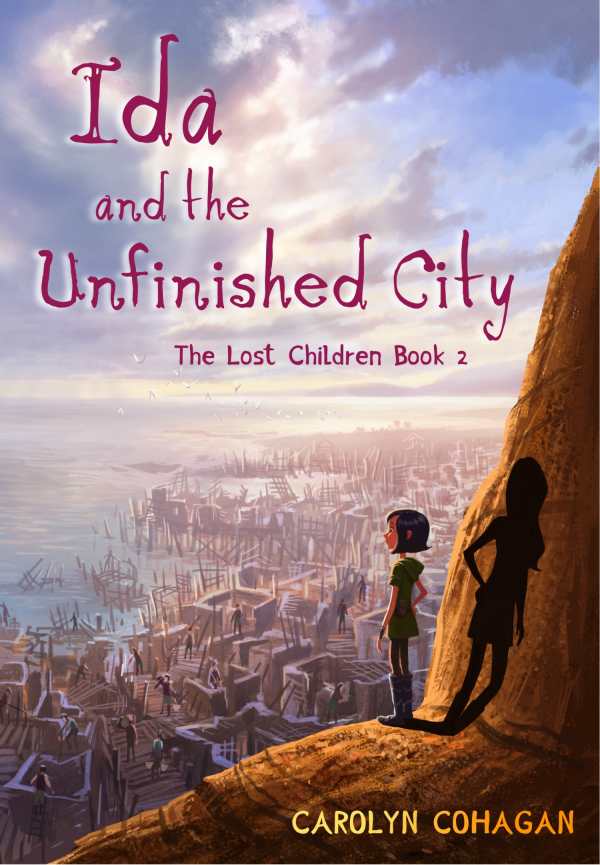Ida the Unfinished City
The Lost Children Book 2
In the uplifting fantasy novel Ida and the Unfinished City, memorable characters move through a world that’s directed by natural disasters.
Carolyn Cohagan’s Ida and the Unfinished City is an enchanting middle grade fantasy in which a picaresque girl hunts for a cure to an unusual ailment.
Orphaned Ida was buried alive beside two underworld, bearlike beasts who “fed off the vitality of children.” As a consequence, she’s now a sixteen-year-old who has been trapped inside of a twelve-year-old’s body. Lacking the ability to age, and feeling the chasm between her agile mind and childlike appearance, she longs for a solution. In this second series title, Ida travels to the Unfinished City to find it.
The Unfinished City is an eccentric, muddy town that’s leveled by a flood each year and rebuilt by its diligent residents. Its animated setting bustles with construction and is enriched by characters who fall into two camps: those who revere the goddess Aquacious and welcome the floods, and the Anti-Delugists, who dwell on cliffs and believe that science and industrialization would help. Their colorful exchanges reveal their differences, while Ida’s encounters with people from both sides highlight her knack for inhabiting any role that’s required of her. Her outsider status gives her a clear-eyed view of the city’s absurdities and wonders. When she drops her self-sufficient act long enough to trust others, her growth is rewarding.
A plucky girl who “liked to pretend she never had regrets,” Ida survives through card tricks and pickpocketing. Her thoughts and actions reveal her as motivated and perceptive about other people’s expectations. Her attempts to find out about a rumored treatment pull her through misadventures; these span brisk chapters and amplify the book’s suspense.
The book’s other imaginative characters, including a short sponge shop owner, a boy who was adopted by an Anti-Delugist, and a hermit, are intriguing. While their situations tie into the conflict about whether or not the annual flood is good, their motivations are realistic, and their stories are deep. Though the villain’s duplicity boils down to familiar greed, his ultimate plot is a form of cartoonish sabotage that’s original in its deviousness and age-appropriate for middle grade readers.
Themes of modernization’s ill effects, including the notion that it leads to ingratitude, result in surprising, provocative arguments for staying inside of the flood zone. When Ida gets involved in the local conflict, this spurs her further development: she’s forced to choose between her own desires and what’s best for others. Learning to accept people’s help through the series of dangers she faces also contributes to her emotional maturation. But resolution for Ida arrives through a contrived miracle. In its emphasis on rewards for moral choices, it’s a too easy conclusion.
In the uplifting fantasy novel Ida and the Unfinished City, memorable characters move through a world that’s directed by natural disasters.
Reviewed by
Karen Rigby
Disclosure: This article is not an endorsement, but a review. The publisher of this book provided free copies of the book and paid a small fee to have their book reviewed by a professional reviewer. Foreword Reviews and Clarion Reviews make no guarantee that the publisher will receive a positive review. Foreword Magazine, Inc. is disclosing this in accordance with the Federal Trade Commission’s 16 CFR, Part 255.

